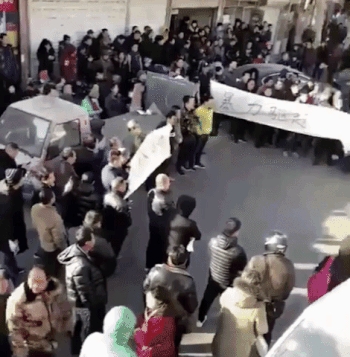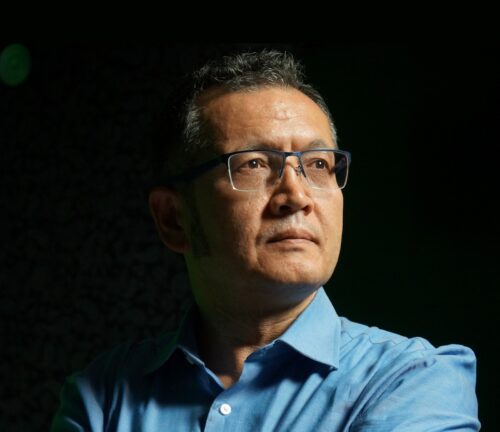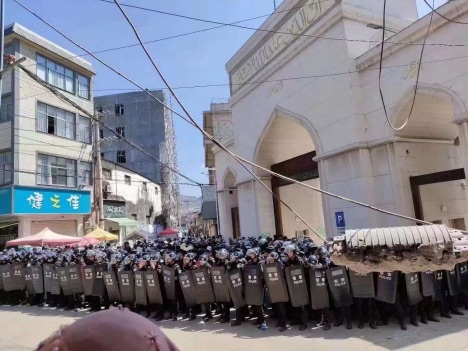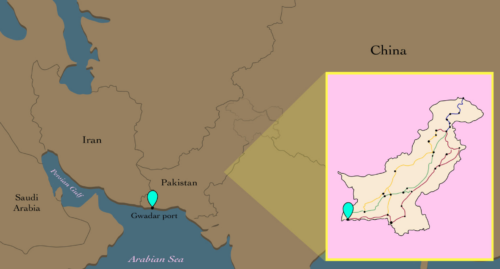Anti-eviction protest breaks out in Beijing’s Feijia Village on Human Rights Day

Hundreds of people gathered today in Feijia Village 费家村, outside of Beijing’s northeast Fifth Ring Road, to protest the government-mandated mass evictions that have destroyed livelihoods — and entire neighborhoods — over the past month.
Today happens to be the 70th edition of Human Rights Day, a UN-recognized commemoration of human rights around the world.
Villagers blocked the street and carried huge banners with the slogan “Forced/violent evictions violate human rights” (暴力驱赶,侵犯人权), which they also chanted and printed on flyers. In the video above, a woman claiming to be the town mayor gets on a megaphone to tell the protesters that they will be heard: “Trust me,” she says, “whatever appeals you have today, it’s all OK.”
What began as a clean-up of Xinjian Village in Beijing’s Daxing District in the name of fire safety has turned into a full-blown campaign to drive out the city’s so-called “low-end population,” and people are not happy. Because this is China, where protests are commonplace (just underreported), it was only a matter of time before people got together to stage a rally.
While relatively small in scale, the protest at Feijia might not be the last we see in the coming weeks. Anxiety and anger has been simmering in the wake of Beijing’s controversial campaign, and pushback has been coming from all fronts. Two weeks ago, a poster at Tsinghua University attracted attention for urging opposition —
Democracy Wall never goes away. Today we see a courageous post in Qinghua University calling out Beijing’s large-scale crackdown on it’s “low-end population.” pic.twitter.com/d0N8F4j5RR
— afra (@afrazhaowang) November 30, 2017
— while more than 100 Chinese intellectuals publicly opposed the clean-up measure. As Caixin notes, even state media has been uncharacteristically critical of the authorities’ actions:
In a commentary it published on social media platform WeChat Sunday, China Central Television (CCTV) said that while such a campaign should be “implemented with force,” officials should also demonstrate “a degree of warmth or compassion” towards the affected communities.
“It’s true that safety risks could be lowered dramatically by pushing tenants to move out of their fire-prone homes swiftly,” it said. “But how can migrants quickly find another shelter that’s safe and where would they go to keep from the freezing cold in winter?”
Perhaps also of concern to decision makers, it seems like the unrest is creeping closer to the city center. Whereas villages like Xinjian and Picun 皮村 are on the far outskirts of Beijing, Feijia is located just north of 798 Art District, a popular tourist destination known for its collection of art galleries and cafes.
Stay tuned for developments. For now, some pictures and more videos of the Feijia protest gathered from social media:
12日10日 #世界人權日。
北京,朝陽區,費家邨,低端人群上街示威,抗議被暴力驅趕,侵犯人權,我們不是低端人口,我們要站出來捍衞尊嚴。 pic.twitter.com/Gb4YVCtyMl— ꧁黃昭雲꫞꧂ (@huangzhaoyun) December 10, 2017
UPDATE, 11/11, 1:41 am ET: The Twitter user below says the following video is from Nanxiaojie 南小街 on the border between Daxing and Fentai districts in south Beijing.
https://twitter.com/szstupidcool/status/939726580925980672









